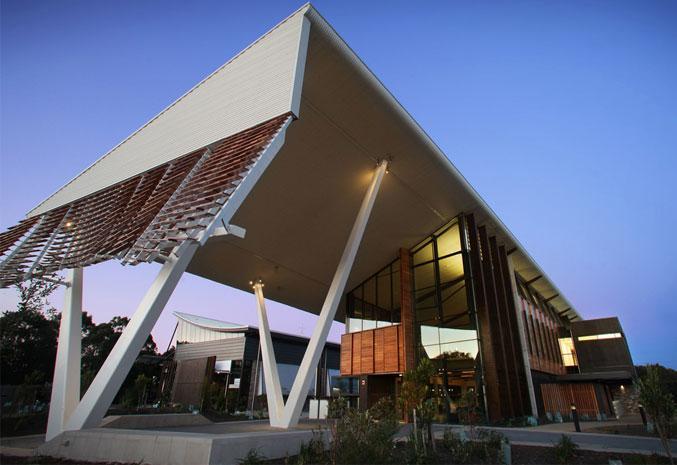June 28, 2023
Microgrid at UOW Innovation Campus to enable critical clean energy research
Clean Energy Living Laboratory will explore challenges and economic benefits of microgrid technology
The Australian Power Quality Research Centre (APQRC) at University of Wollongong (UOW) has received $1.1 million from the NSW Government to establish Australia’s first mixed-use, precinct-based microgrid that will provide critical research infrastructure for microgrid-based electricity generation, storage, consumption, demand management and control technologies.
A microgrid is a small subset of an electricity grid that provides energy generation and storage at a local level and may be capable of operating independently of the wider electricity infrastructure. Microgrids have the potential to deliver low cost, low carbon, resilient electricity solutions.
The Clean Energy Living Laboratory (CELL) at UOW’s Innovation Campus will use electricity generated by 468 solar panels located on the roof of the Sustainable Buildings Research Centre (SBRC) to power the building, Illawarra Flame project house and Campus East Student Accommodation, including the kitchens and laundry, as well as street lighting in a surrounding area. The CELL microgrid will incorporate commercial and residential space, offering researchers the chance to explore the viability of communities that want to reduce their reliance on the national electricity network through on-site clean energy generation.
Once established, the microgrid will operate as a ‘living laboratory’, available to researchers, industry, technology developers and students to test solutions in a real-world environment.
APQRC Research Coordinator Sean Elphick said the microgrid will provide insights into the technical and economic benefits and challenges of a holistic approach to clean energy technology.
“Microgrids will become critical components of the distributed and low-emission electricity systems of the future, facilitating decentralised, resilient and low-carbon electricity supply.
“This project will deliver a flagship mixed-use, precinct-based microgrid highlighting both the benefits and challenges of deploying such a system within the National Electricity Market.
“It will also provide comprehensive and open data on real-world usage, and enable critical research as a unique living laboratory for best practices in microgrid design, deployment and operation.”
The CELL microgrid will allow researchers to investigate the performance of new clean-energy technologies, such as inverters and battery energy storage systems, and to assess the capabilities of microgrids in supporting the clean energy future. The CELL microgrid will also be made available to the general public to provide opportunities for a broad cross-section of society to observe clean energy technology solutions at work.
UOW Deputy Vice-Chancellor and Vice-President (Research and Sustainable Futures) Professor David Currow said the CELL will help to position NSW as a leader in this area.
“I am so proud that UOW is leading the way on the clean energy revolution and we welcome the NSW Government’s support. Insightful, innovative projects such as CELL will leverage success of the Sustainable Buildings Research Centre and the Australian Power Quality Research Centre to make meaningful leaps forward on the worldwide journey towards affordable and clean energy for all.”
UOW is committed to addressing the United Nations Sustainable Development Goals, which provide a shared blueprint to achieve a better and more sustainable future for everyone. The Clean Energy Living Laboratory project addresses Sustainable Development Goal 7 Affordable and Clean Energy, which ensures access to affordable, reliable, sustainable and modern energy for all.
